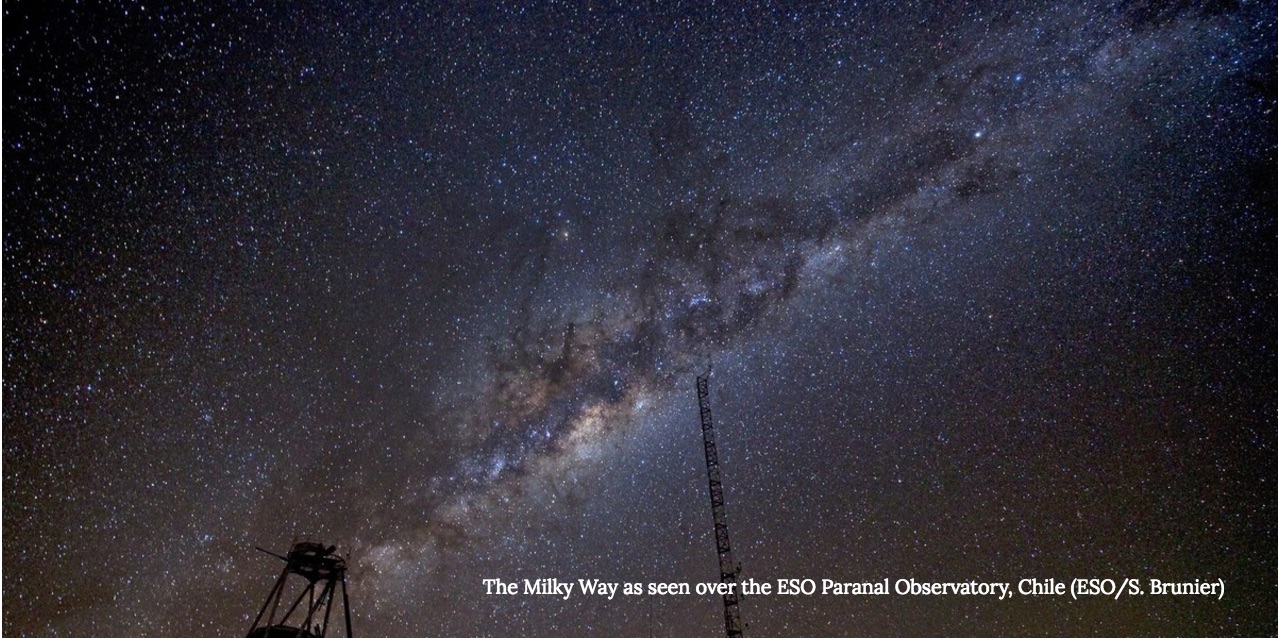The Milky Way's Most Distant Stars May Be Stolen Goods

Some of the most distant stars in the Milky Way may have been lifted from another galaxy, research released Wednesday shows.
The unintended donor, known as the Sagittarius dwarf, is one of dozens of miniature galaxies that loop around the Milky Way. The Sagittarius dwarf is currently located about 70,000 light-years from Earth.
Computer simulations show that Sagittarius paid a price each time it flew by its bigger neighbor. The Milky Way's heftier gravitational tug has stripped away about one-third of the dwarf galaxy's stars and 90 percent of its dark matter, a paper to be published in The Astrophysical Journal shows.
"This resulted in three distinct streams of stars that reach as far as one million light-years from the Milky Way's center. They stretch all the way out to the edge of the Milky Way halo and display one of the largest structures observable on the sky," the Harvard-Smithsonian Center for Astrophysics wrote in a press release.
RELATED: Milky Way's Neighbor Is a Clean Freak
The finding stems from research showing that five of the Milky Way's 11 most distant stars are located about 300,000 light-years from Earth, well outside the Milky Way's spiral disk.
Graduate student Marion Dierickx and Harvard theorist Avi Loeb ran computer simulations to map out the dwarf galaxy's travel itinerary for the last 8 billion years, adjusting its initial velocity and angle of approach to the Milky Way to match current observations of the straggler stars.
Get the Space.com Newsletter
Breaking space news, the latest updates on rocket launches, skywatching events and more!
"The starting speed and approach angle have a big effect on the orbit, just like the speed and angle of a missile launch affects its trajectory," Loeb said in the press release.
The research shows that the five stars have positions and velocities indicating they were stripped from the Sagittarius dwarf billions of years ago.
The other six distant Milky Way residents do not appear to be from Sagittarius, but they might have emigrated from a different dwarf galaxy, the research shows.
Meanwhile, Dierickx and colleagues remain on the hunt for other Sagittarius transplants.
WATCH VIDEO: This Is How We See the Universe
Editor's Note: This story has been corrected to reflect that the dwarf Sagittarius galaxy is currently about 70,000 light-years from Earth. An earlier version referred to a similarly-named galaxy that is 3.4 million light-years away.
Originally published on Seeker.
Join our Space Forums to keep talking space on the latest missions, night sky and more! And if you have a news tip, correction or comment, let us know at: community@space.com.

Irene Klotz is a founding member and long-time contributor to Space.com. She concurrently spent 25 years as a wire service reporter and freelance writer, specializing in space exploration, planetary science, astronomy and the search for life beyond Earth. A graduate of Northwestern University, Irene currently serves as Space Editor for Aviation Week & Space Technology.









